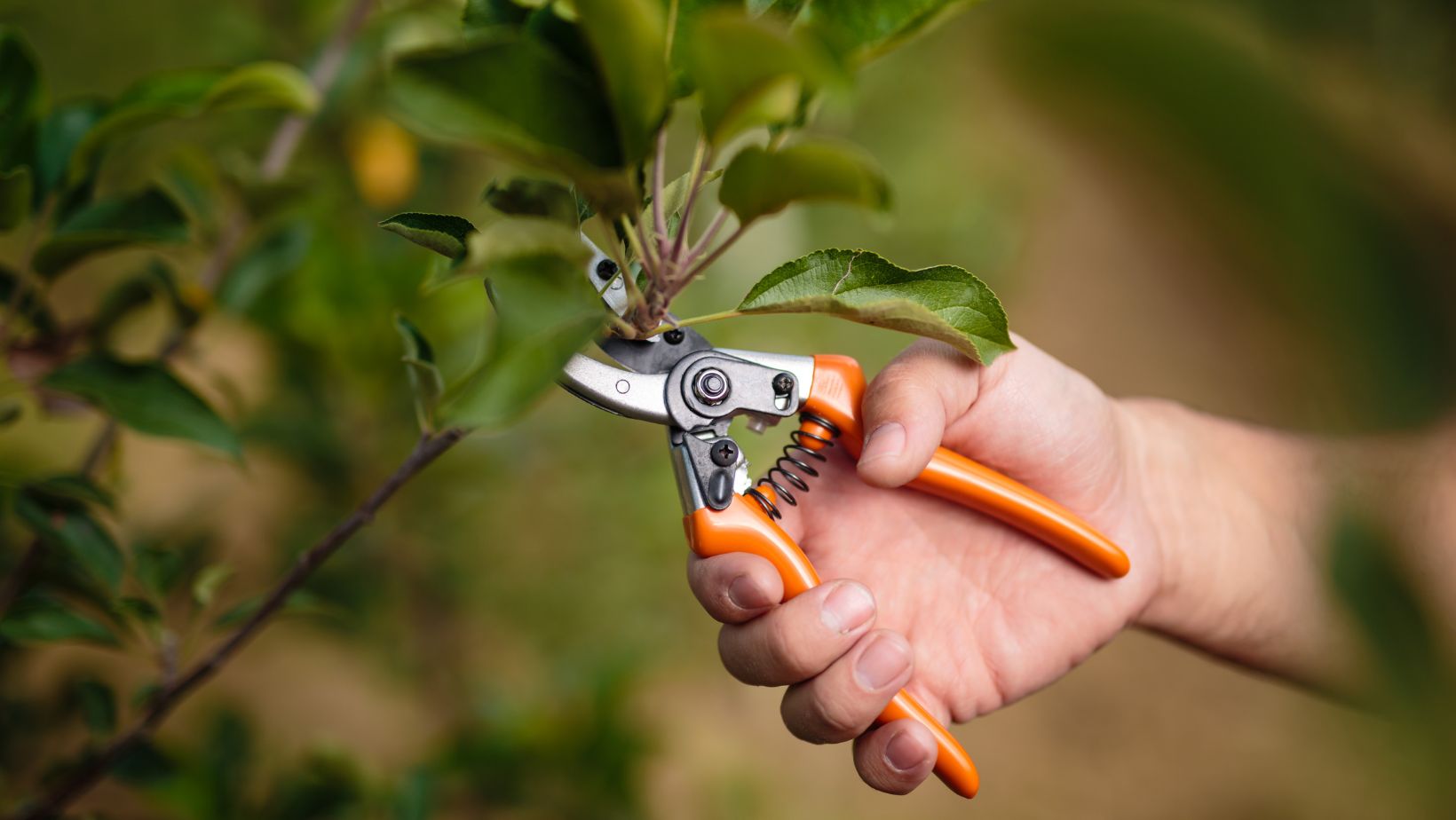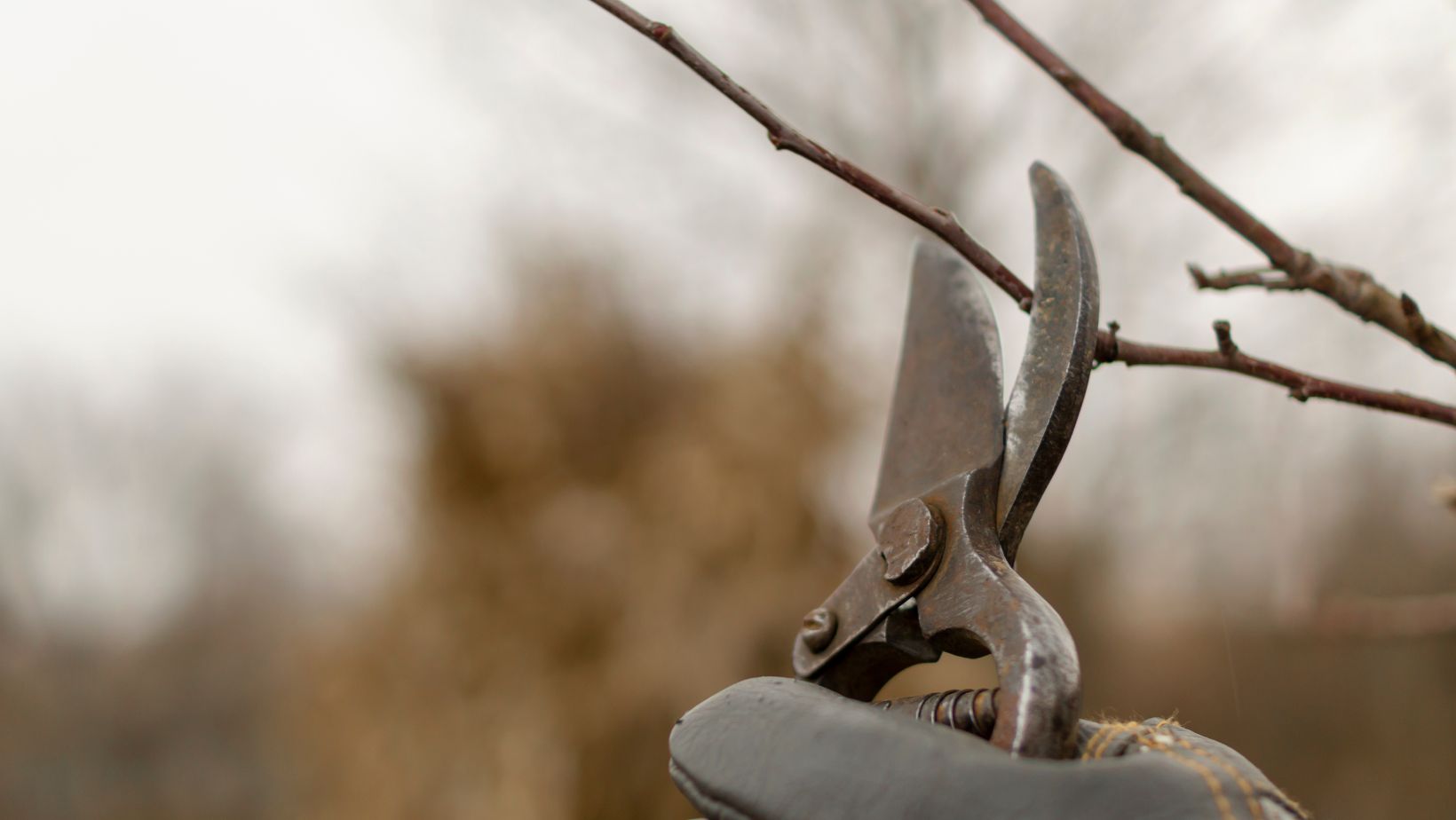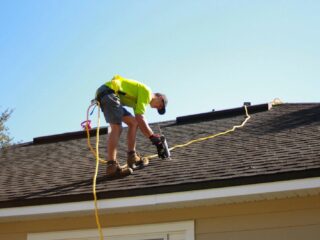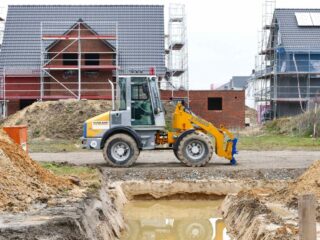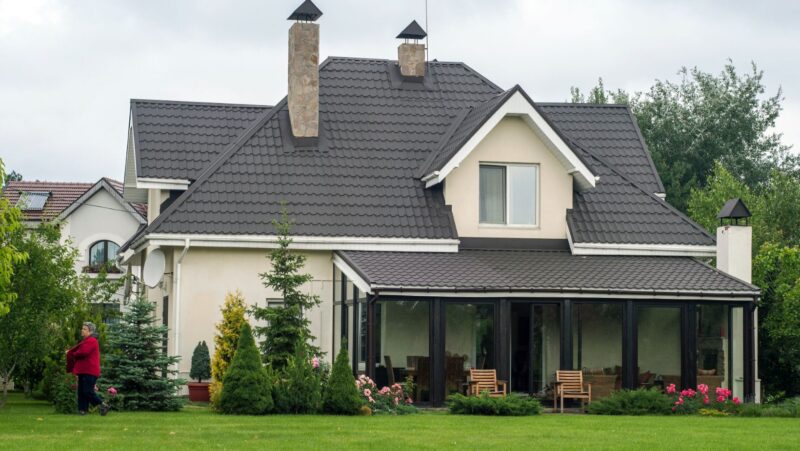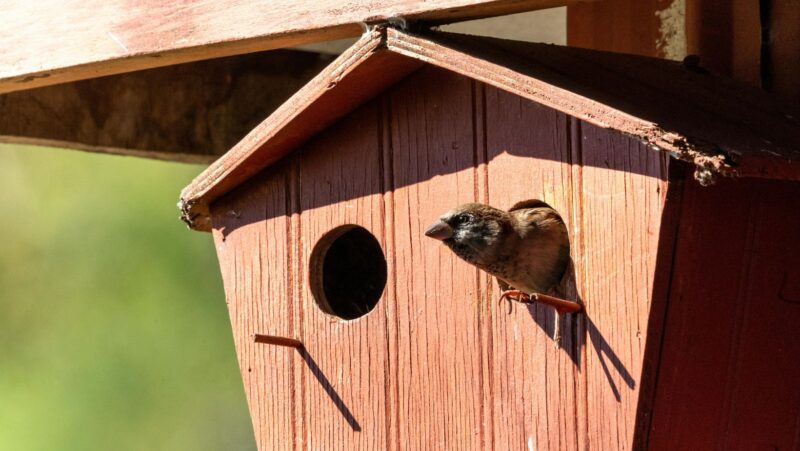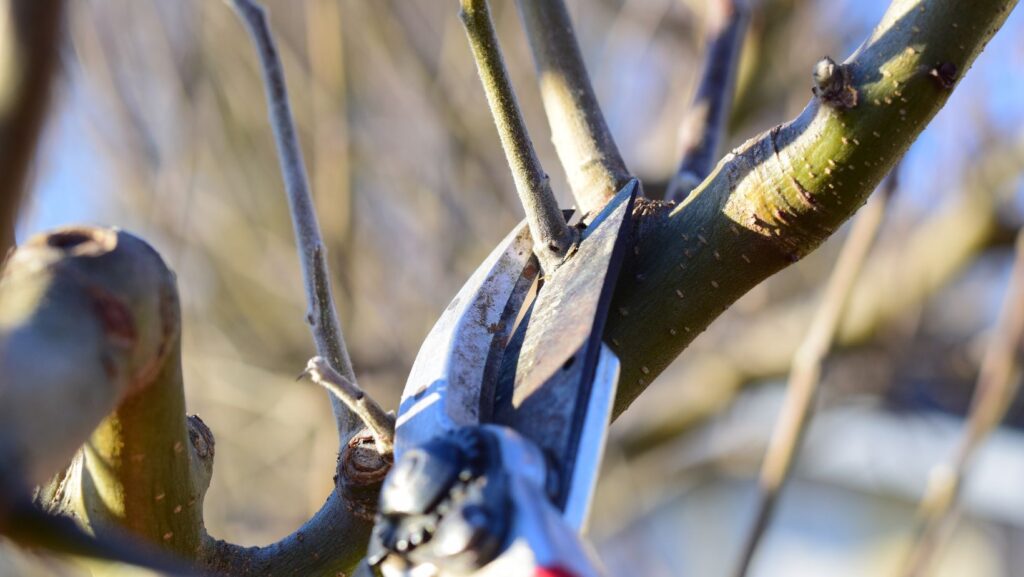
Pruning trees at the wrong time can be a costly mistake for Northern Virginia homeowners. Late spring and summer bring challenges that skilled arborists immediately recognize as harmful to tree health. The worst time to prune trees in Northern Virginia is during the growing season from late April through September, when trees are vulnerable to disease and pest infestations.
Virginia’s unique climate creates specific pruning considerations that differ from other regions. During summer months, fresh cuts attract harmful insects that can quickly damage or kill vulnerable trees. Oak trees, in particular, should never be pruned between April and October due to the high risk of oak wilt disease.
Northern Virginia gardening expert Gary Teates from G & V Tree Service, Inc. recommends winter dormancy as the optimal pruning period. Trees conserve energy during this time, allowing them to heal efficiently without the stress of maintaining new growth. Proper timing, combined with correct cutting techniques, ensures trees remain healthy and beautiful for decades.
Northern Virginia Tree Pruning Essentials
Proper timing of tree pruning in Northern Virginia directly impacts tree health, appearance, and longevity. Local climate patterns and tree species characteristics determine the best and worst times for trimming branches.
Why Pruning Timing Matters
Pruning at the wrong time can expose trees to disease, pest infestation, and unnecessary stress. Late summer and early fall rank as particularly problematic seasons for most Northern Virginia trees. During these periods, trees begin preparing for dormancy.
Fresh cuts heal slowly in autumn, leaving wounds exposed during winter months. This vulnerability increases the risk of fungal infections and insect damage.
Spring-flowering trees lose their bloom potential when pruned in late winter. Timing affects not just aesthetics but structural integrity too. Poorly timed cuts on maples and birches often lead to excessive sap flow, weakening the tree.
Professional arborists recommend scheduling most pruning tasks during late winter dormancy for maximum benefit and minimal harm.
Common Tree Species Affected By Improper Pruning
Oak Trees face serious threats when pruned during warm months. Oak wilt disease spreads rapidly through fresh cuts between April and October.
Cherry and Dogwood trees suffer significantly when pruned during spring flowering. These natives store energy in their buds over winter, and untimely cuts waste this valuable resource.
Maple and Birch species “bleed” excessively when cut in early spring. While not fatal, this sap loss stresses the tree unnecessarily.
Crape Myrtles experience “crape murder” when improperly pruned in late winter. Harsh topping destroys their natural form and weakens branch structure.
Evergreens like pine and spruce recover poorly from late-season pruning before severe winter conditions arrive.
Regional Climate Impacts on Tree Health
Northern Virginia’s climate creates unique challenges for tree maintenance. The region’s hot, humid summers accelerate decay in fresh pruning wounds. Temperatures regularly exceeding 90°F between June and September create ideal conditions for fungal growth.
The area’s unpredictable winter weather patterns—fluctuating between freezing temperatures and mild days—stress trees with improperly timed pruning cuts.
Spring’s variable arrival affects optimal pruning windows. Early warm spells followed by late frosts damage newly pruned trees that have broken dormancy.
Heavy summer thunderstorms increase breakage risks in weakened branches. Trees pruned just before these weather events face greater structural failures.
Climate change has extended growing seasons, shifting traditional pruning calendars. Experienced arborists now adjust timing based on observed seasonal patterns rather than fixed calendar dates.
Worst Time to Prune Trees: Key Risks and Consequences
Pruning trees during the wrong season in Northern Virginia can lead to significant damage and setbacks for your landscape. Timing matters tremendously when it comes to maintaining healthy trees and preserving their natural beauty.
Damage to Flower Buds and New Growth
Late winter to early spring (February-April) ranks among the worst times to prune flowering trees in Northern Virginia. Many species set their flower buds during the previous growing season. Cutting branches during this period removes these buds before they bloom.
Spring-flowering trees like dogwoods, redbuds, and magnolias suffer most from ill-timed pruning. Once these buds are cut, they won’t return until the following year.
New growth is particularly vulnerable during spring emergence. Fresh shoots contain high moisture levels and haven’t developed protective barriers. Pruning cuts made during this active growth phase heal slowly and often develop complications.
The damage extends beyond aesthetics. Removing too much new growth weakens the tree’s energy reserves and disrupts its natural growth pattern. Trees can take 2-3 seasons to recover from aggressive spring pruning.
Increased Vulnerability to Disease and Dieback
Summer (June-August) pruning, especially during humid periods, creates ideal entry points for pathogens. Fresh cuts during this season attract insects that can transmit diseases. Oak trees, for example, should never be pruned during warm months due to oak wilt susceptibility.
Fungal infections thrive in Northern Virginia’s summer humidity. Spores easily colonize fresh pruning wounds and travel throughout the vascular system. This leads to branch dieback that can spread rapidly.
Trees pruned during hot, dry periods experience additional stress. The combination of drought and pruning wounds forces trees to divert limited resources to healing rather than sustaining existing growth.
Disease indicators after improper pruning include:
- Wilting leaves despite adequate water
- Discolored areas around pruning cuts
- Premature leaf drop
- Progressive dieback beyond the original cut
Delayed Blooms and Reduced Attractive Foliage
Fall pruning (September-November) removes stored energy reserves trees need for winter survival. This energy deficit delays spring bloom cycles and reduces flower production the following season.
Many Northern Virginia trees, including cherries and crabapples, rely on stored nutrients to produce vibrant spring displays. Cutting in fall disrupts this natural process.
Foliage quality suffers after poorly-timed pruning. Leaves may emerge smaller, paler, or distorted the following spring. Trees respond to stress by producing less attractive, sparse canopies.
The recovery timeline varies by species. Maples and oaks might take 2-3 years to regain their characteristic shape and foliage density after improper pruning. Young trees suffer more dramatic and lasting consequences than established specimens.
The cumulative effect reduces both the aesthetic appeal and property value that mature, well-formed trees provide to Northern Virginia landscapes.
Specific Seasons to Avoid Pruning in Northern Virginia
Timing is critical when pruning trees in Northern Virginia. Certain periods of the year can stress trees and make them vulnerable to disease or weather damage.
Late Fall: Preparing Trees for Dormancy
Late fall (October through early December) ranks among the worst times to prune trees in Northern Virginia. Trees are preparing for dormancy during this period, and fresh cuts heal slowly. The wounds remain open longer, creating entry points for diseases and pests.
Cold snaps following pruning can damage the tissue around cuts. This damage extends deeper into branches, potentially killing more of the tree than intended.
Many fungal diseases spread actively during fall’s wet conditions. Fresh cuts are particularly susceptible to these pathogens. Oak trees should never be pruned in fall due to oak wilt risk.
Fall pruning may also stimulate new growth that won’t harden off before severe winter arrives. These tender shoots typically die in freezing temperatures, wasting the tree’s energy reserves.
Early Spring: Protecting Emerging Buds
Early spring (February to mid-March) presents another problematic pruning window in Northern Virginia. During this time, trees direct stored energy toward producing new buds and leaves.
Pruning in early spring removes these developing buds, essentially wasting the tree’s winter energy stores. This creates unnecessary stress at a critical growth stage.
Many Northern Virginia trees, like maples and birches, are “bleeders” that excessively drip sap when cut in early spring. While this sap loss rarely harms mature trees, it:
- Attracts pests
- Creates unsightly staining
- Makes cleanup more difficult
Spring-flowering trees and shrubs form their buds in the previous growing season. Early spring pruning removes these flower buds before they open, eliminating that year’s blooms. Garden aesthetics suffer when dogwoods, redbuds, and magnolias lose their signature flowers.
Trees Most Affected by Poor Pruning Timing
Certain tree species suffer significant damage when pruned at the wrong time in Northern Virginia’s climate. Timing errors can lead to disease susceptibility, reduced flowering, and structural weakness.
Flowering Trees and Shrubs
Hydrangeas face serious consequences from improper pruning schedules. Smooth hydrangea (Hydrangea arborescens) blooms on new wood, making late spring the worst time to prune as it removes developing flower buds.
Lilacs suffer dramatically when pruned in late fall or winter. These beloved shrubs set their flower buds shortly after the previous season’s flowers fade. Pruning after mid-July essentially removes next year’s blooms.
Weeping cherry trees should never be pruned during humid summer months. This timing creates open wounds during peak disease season, inviting fungal infections that can decimate these ornamental favorites.
Nandina (Heavenly Bamboo) struggles when pruned in early spring. This timing disrupts the plant’s natural energy flow and can significantly reduce berry production for the following season.
Evergreens and Pines
Pines respond poorly to late summer or autumn pruning. This timing prevents wound healing before winter, leaving trees vulnerable to frost damage and disease entry points.
Most evergreens store energy reserves differently than deciduous trees. Pruning during active growth phases (mid-spring through early summer) depletes these reserves and stresses the entire tree system.
Eastern White Pine, common in Northern Virginia landscapes, should never face heavy pruning in late fall. This timing weakens the tree’s natural defenses just as winter stressors arrive.
Spruce and fir trees pruned in late August through September often develop brown, dead areas where cuts were made. The trees lack sufficient time to seal wounds before winter dormancy sets in.
Impact on Surrounding Gardens and Landscaping
Poor tree pruning timing affects more than just the trees themselves. Gardens, lawns, and the entire landscape ecosystem can suffer when pruning occurs at the wrong time in Northern Virginia.
Effect on Grass, Weeds, and Native Plants
Heavy pruning during late spring can drop excessive debris onto lawns, smothering grass and creating perfect conditions for weed growth. Grass underneath pruned trees might struggle as sudden light exposure can shock previously shaded areas, causing yellowing or burning.
Native plants adapted to specific light conditions may suffer when tree canopies are suddenly reduced. Many Virginia woodland natives like ferns and trillium require filtered light that disappears with improper pruning.
Weeds often capitalize on disrupted ecosystems. When trees are pruned in summer or fall, the shifting light patterns and soil disturbance create opportunities for invasive species to take hold before desirable plants can adjust.
The timing of debris removal matters too. Leaving branches and foliage on grass for extended periods can create dead patches that persist for months.
Role of Pruning for Vegetable and Shade Gardens
Vegetable gardens require careful consideration when nearby trees need pruning. Late winter pruning is ideal as it minimizes disruption to spring planting schedules for crops like lettuce and garlic.
Pruning during the growing season can:
- Cast unexpected shade on sun-loving vegetables
- Drop debris into garden beds
- Disturb root systems of shallow-rooted plants
- Alter moisture patterns critical to garden success
Shade gardens present different challenges. These specialized landscapes rely on consistent light filtration. Pruning in fall disrupts this balance when plants are preparing for dormancy, leaving them vulnerable to winter damage.
Shade-loving plants need time to adapt to new light conditions. Pruning in early spring gives these plants the entire growing season to adjust before facing harsh weather.
Ideal Practices for Safe and Healthy Pruning
Proper pruning techniques protect trees from disease and promote healthy growth cycles. Timing and tool selection significantly impact tree health outcomes in Northern Virginia’s climate.
Recognizing Signs It’s Not the Right Time
Trees send clear signals when pruning should be avoided. Look for these warning indicators:
- Active growth buds appearing on branches
- Sap flowing heavily from small cuts
- Fresh leaf development in spring
- Stress symptoms like yellowing leaves or browning bark
During summer heat waves, trees redirect energy to survival rather than healing wounds. Pruning during these periods can lead to stunted growth and increased vulnerability to pests.
Dead branches can be removed any time, as they pose safety risks. However, live growth should remain untouched during active growing seasons or extreme temperature conditions.
Tips from Local Garden Centers and Nurseries
Northern Virginia garden centers offer specialized advice for our region’s trees. Merrifield Garden Center recommends:
Essential Pruning Tools:
- Sharp bypass pruners for clean cuts
- Loppers for branches up to 2 inches thick
- Disinfected equipment between uses (1 part bleach to 9 parts water)
Meadows Farms Nursery suggests waiting until late winter for most pruning tasks. This gives trees time to harden off before spring’s rapid growth cycle begins.
Apply wound dressing only for oak trees during oak wilt season. Most other trees heal naturally without sealants. Remember to cut outside the branch collar—never flush with the trunk—to preserve the tree’s natural defense systems.
Alternatives to Pruning During Dangerous Periods
When pruning is risky in northern Virginia, several safer options can maintain your landscape’s health and beauty without harming trees during vulnerable periods.
Cut Flowers and Decorative Options
Instead of pruning trees during dangerous times, focus on cut flowers and small shrubs for landscape improvements. Early spring flowering shrubs like forsythia and cherry can provide beautiful cuttings for indoor displays without major tree work.
Safe cutting practices:
- Cut only small branches (less than 1/2 inch diameter)
- Make cuts at 45-degree angles
- Place stems immediately in water
- Use sharp, clean tools
These cuttings bring natural color indoors while trees recover from winter or prepare for dormancy. Many Virginia native plants offer excellent cutting opportunities throughout the year without stressing larger trees.
Try creating seasonal arrangements with:
- Spring: Dogwood branches, cherry blossoms
- Summer: Hydrangea blooms
- Fall: Colorful maple twigs with leaves
- Winter: Holly branches with berries
Maintaining Attractive Greens Without Major Pruning
Light maintenance keeps trees looking good without harmful pruning. Remove only dead or damaged leaves and small twigs that can be reached from the ground.
Gentle cleaning options:
- Use a soft rake to clear fallen debris
- Gently wash dust from lower foliage with a hose
- Apply mulch to define tree areas and reduce weed competition
Adding companion plants around trees creates visual interest while avoiding tree stress. Shade-loving plants like hostas, ferns, and native woodland flowers thrive under tree canopies in northern Virginia’s climate.
Pro tip: Adding 2-3 inches of quality mulch not only looks attractive but also helps retain soil moisture and suppress weeds.
Managing Rain and Moisture for Tree Health
Proper moisture management supports tree health during no-pruning periods. Northern Virginia’s rainfall patterns can sometimes cause drought stress or excessive moisture.
Water management techniques:
- Install drip irrigation for consistent moisture during dry spells
- Create shallow channels to direct heavy rain away from tree trunks
- Add rain barrels to capture roof runoff for later use
Moisture meters help monitor soil conditions around valuable trees. The ideal soil moisture level sits between 40-60% for most northern Virginia species.
During summer months, morning watering proves most effective. This timing allows foliage to dry before evening, preventing fungal issues that might otherwise require pruning to resolve.
Regional Comparisons: Pruning in Maryland vs. Northern Virginia
Maryland and Northern Virginia share similar climates but have subtle differences that affect optimal tree pruning schedules and practices. These neighboring regions face distinct challenges due to variations in weather patterns and growing seasons.
Weather Differences Affecting Pruning Schedules
Northern Virginia typically experiences slightly milder winters than parts of Maryland, especially western Maryland where elevations are higher. This creates a 1-2 week difference in spring emergence and fall dormancy periods between the regions.
Maryland’s coastal areas near the Chesapeake Bay benefit from the water’s moderating effect, allowing for earlier spring pruning—sometimes as early as late February. In contrast, Northern Virginia arborists often wait until mid-March for the same work.
Severe winter storms hit Maryland’s northern regions more frequently, causing greater tree damage and necessitating more emergency pruning. Virginia’s pruning calendar typically allows a longer fall window before winter dormancy sets in.
Temperature Comparison:
|
Region |
Avg. Winter Low |
Spring Pruning Start |
|
Northern VA |
25°F |
Mid-March |
|
Maryland |
22°F |
Late February (coastal) to Late March (western) |
Shared Challenges between Regions
Both Maryland and Northern Virginia face the challenge of severe storm damage that disrupts ideal pruning schedules. Emergency pruning after ice storms or hurricanes must occur regardless of season, though healing is slower during dormant periods.
The emerald ash borer affects both regions, requiring careful timing of pruning to avoid spreading infestations. Experts in both areas recommend avoiding ash tree pruning during summer months when beetles are most active.
Climate change has shifted traditional pruning calendars in both regions. Spring pruning now starts 7-10 days earlier than it did twenty years ago according to regional forestry data.
Both areas struggle with the same worst time to prune: late summer to early fall (August-September). This period stimulates new growth that won’t harden off before winter, making trees vulnerable to frost damage and disease.
Frequently Asked Questions
Proper timing for tree pruning in Northern Virginia can significantly impact tree health and growth. Many property owners have specific concerns about seasonal timing and regional considerations.
What are the recommended months to avoid tree pruning in Northern Virginia?
Late summer through early fall (August to October) is generally the worst time to prune trees in Northern Virginia. This period encourages new growth that won’t have time to harden before winter.
Spring flowering trees should not be pruned from March through June. This removes flower buds that formed the previous year.
Disease transmission risks are highest during April through August when fungal pathogens are most active in our region.
Can pruning during certain seasons harm trees in Northern Virginia?
Yes, pruning at the wrong time can cause significant harm. Summer pruning stresses trees during their peak growing season, potentially weakening their natural defenses.
Pruning during periods of high humidity increases infection risks. The region’s occasional summer humidity makes wounds heal slower and invites disease.
Winter pruning of certain species like maples, birches, and walnuts can cause excessive sap flow and stress the tree unnecessarily.
Are there specific times of the year when tree trimming is discouraged regionally?
The extreme humidity of July and August makes these months particularly problematic for pruning in Northern Virginia. Open wounds heal more slowly in these conditions.
Hurricane season preparations often prompt last-minute pruning, but this timing (August-September) can leave trees vulnerable to both storm damage and disease entry.
Local regulations may restrict certain pruning activities during nesting seasons for birds, typically April through July in our area.
What are the consequences of improperly timed tree pruning in this area?
Increased disease susceptibility tops the list of consequences. Oak wilt, in particular, spreads rapidly through wounds made during the warm months in Northern Virginia.
Structural weakening may occur if trees are pruned before winter, as they won’t have time to compartmentalize wounds before freezing temperatures arrive.
Reduced flowering and fruiting often result from ill-timed pruning, particularly in ornamental species like dogwoods and redbuds that are regional favorites.
How does the climate in Northern Virginia affect ideal tree pruning schedules?
Northern Virginia’s transition climate, between southern and northern zones, creates unique challenges. The region’s warm, humid summers and occasionally harsh winters necessitate careful timing.
Spring weather volatility, with dramatic temperature swings, makes March and early April risky for major pruning work.
The extended fall season, often warm through November, can confuse trees if they’re pruned in early autumn, triggering unwanted late growth.
What tree species in Northern Virginia have specific seasonal pruning requirements?
Oak trees should never be pruned during the growing season (April-October) due to oak wilt risk, a particular concern in Virginia’s oak-rich landscapes.
Flowering trees like cherry, dogwood, and redbud should only be pruned immediately after flowering finishes to preserve next year’s blooms.
Maple trees require careful timing in our region, with late winter (February) being ideal before sap begins flowing, but after the harshest cold has passed.

